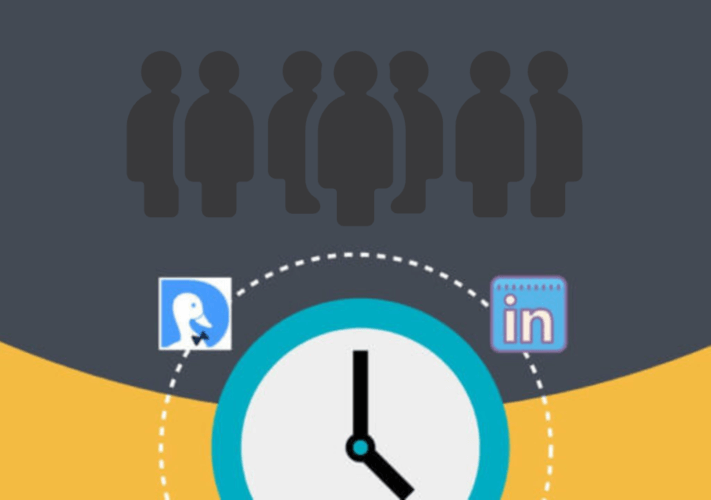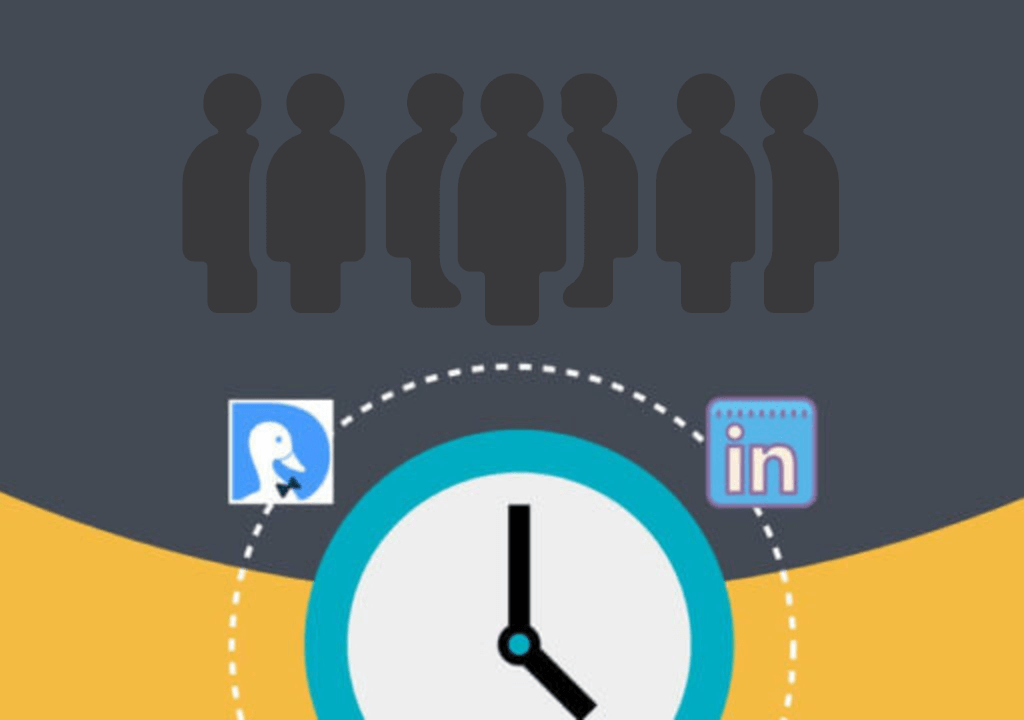At a glance
What Dux-Soup Turbo does: Automates outreach to 1st, 2nd and 3rd connections on LinkedIn. The Dux-Soup Turbo tool does this in a way that simulates natural behavior and allows you to quickly focus on the prospects who actually seem interested in your products and services.
You know what LeadFuze does (but as a reminder): It finds highly-targeted leads based on firmographic details (industry, role, company size, geography, etc.). Then, automates finding leads based on your preset criteria and drips them to your sales stack.
What the integration does: It’s like a firm handshake between the two.
Here’s what the process looks like –
- Set up your search in LeadFuze for your ideal customers you’d like to contact.
- Have Fuzebot find the number of leads per day you’d like sent to Dux-Soup Turbo.
- Set up Dux-Soup Turbo to automatically reach out to the leads on LinkedIn.
- Wait and see which leads interact with your LinkedIn messaging funnel.
So – how best to use LinkedIn outreach through Dux-Soup Turbo to get the best results? Here are some top tips from our years of experience.
Mimic real user behavior
The real benefit of using a LinkedIn automation tool like Dux-Soup is to automate mundane tasks in a way that mimics real user behaviour. That is to say, using LinkedIn as you would normally do, but with automation taking care of the most time-consuming activities. You can see a ton of amazing customer success stories with ROI that’s off the scale here.
The real benefit of using a LinkedIn automation tool is to automate mundane tasks in a way that mimics real user behaviour. Click To TweetIf you are using LinkedIn Sales Navigator, then you want to be taking advantage of the advanced search filters and the option to visit up to 500 profiles per day with Dux-Soup.
But you need to be careful about the number of connection requests and direct messages you send. We’ve already written a blog on best practices which you can read here.
To summarize a couple of the key points in the blog:
- We recommend you start by sending connection requests to no more than 3% to 5% of your total connections per day. As your network expands, the number of recommended connection requests grows too, over time.
- If you are blasting out thousands of connection requests that are disproportionate to your actual total connections, then this type of user behaviour is more likely to trigger a LinkedIn alert.
- Be selective with your search criteria and stay relevant within your target audience. People are more likely to accept your connection request if they see it is from a relevant connection. So, if your LinkedIn profile is optimised for sales and business development and you are trying to connect with similar contacts, you are more likely to be successful.
The opposite is true. If you target IT managers and your profile is optimised for sales, why should these people connect with you? You are more likely to have your connection request declined and too many of these is a bad thing.
Don’t forget the basics
Good principles of growth hacking using LinkedIn usually include some of the following core steps:
– Optimise your LinkedIn profile. When was the last time you looked at your own LinkedIn profile? Chances are it was written a while ago and could do with a polish. Start with creating a Headline and Summary that talks directly to what you offer.
– Boost the number of endorsements that you have. It is often as simple as asking your contacts to give you a short recommendation. In today’s digitally connected world, this social proof can go a long way to helping you to establish real credibility at the start of the sales journey.
– Use customised connection messages. This is a hotly debated topic on growth hacking forums. What is the best or optimum message when trying to connect with someone? Some people favour the short and sweet approach – “Dear <name>, I would like to connect on LinkedIn…..” Some people prefer longer messages which are customized, e.g. if you research and segment the contacts according to a particular technology, then you could start your message with “Dear <name>, I see that you use Salesforce. We have XX Salesforce developers who are available for permanent and short terms assignments….” Which one is best? It depends on what you are trying to achieve and your own preferences. Some people like to ask for a meeting from the first message. The true answer is to find out what works best by testing different approaches for yourself.
Some other tips
- Stay targeted and try testing out personalised messages to increase your chances of a successful connection request.
- Do some regular housekeeping on your connection requests. Make sure that you don’t have too many outstanding requests at any one time. This is a key part of best practice.
- Sending direct messages is a key activity but again you want to make sure you are aligning your efforts with best practice and fair usage. Our rule of thumb is to limit yourself to around 100 to 250 direct messages per day.
Auto-connect to new leads in LinkedIn, with follow-ups, directly from LeadFuze
Once you run your prospect search in LeadFuze you can then use the Lead Fuze automation and Dux-Soup Turbo to automate your LinkedIn outreach.
You want to reach out to 20-50 prospects from Dux-Soup Turbo every day? You can set up LeadFuze to pull up the 20-50 leads that fit your exact parameters and automatically upload them to Dux-Soup Turbo.
Then, set Dux-Soup Turbo to automatically reach out to those contacts.
So, what’s next? There are two options
- Wait and see who interacts with your Dux-Soup Turbo outreach.
- Or, go multichannel and use email, a phone call or even direct mail to really inundate leads.
In short, using Dux-Soup Turbo with LeadFuze automates the creation of a targeted prospect list. And outreaching to that list through LinkedIn, the #1 social selling professional network.
Use the Zapier integration in Dux-Soup Turbo to maximum advantage
When Dux-Soup polled their extensive user base of 50,000+, focusing on those with more complex lead generation operations, the #1 item by far on the ‘Wishlist’ was for Dux-Soup to integrate with Zapier to streamline the lead generation process.
Fast forward six months and Dux-Soup launched the new Dux-Soup Turbo Edition which is the first LinkedIn automation tool to use the Zapier automation and workflow engine. There are endless possibilities to integrate Dux-Soup with an external app by using Webhooks in Zapier. Webhooks serve as a link between two accounts which you can easily set up on Zapier.
With this Zapier integration, you can now connect Dux-Soup to your existing CRM, marketing or recruitment platform, enabling the automated workflows that underpin cutting edge online marketing campaign management.
Try before you buy
Are you ready to set up this integration with LeadFuze and have this powerful combination working for you? Here’s the options to purchase and set up Dux-Soup Turbo but if you’re not sure if you are ready to commit to a subscription, you are welcome to sign up for a FREE 7-day trial!
Want to help contribute to future articles? Have data-backed and tactical advice to share? I’d love to hear from you!
We have over 60,000 monthly readers that would love to see it! Contact us and let's discuss your ideas!


